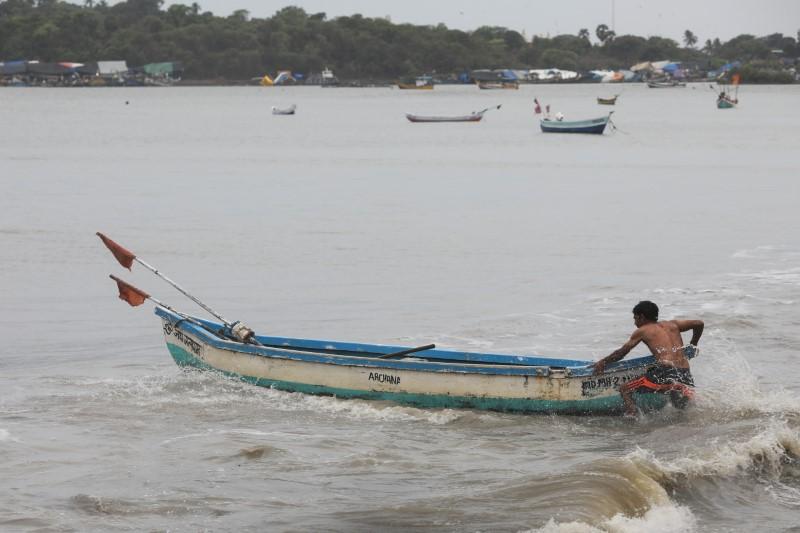Overfishing Is Depleting Global Fish Stocks
Dec 31, 2022 | Pratirodh Bureau
A fisherman pushes his boat in Mumbai. Gathering reliable data from the high seas can be difficult and opaque but it’s estimated one in every five fish caught in our oceans is from illegal, unreported or unregulated fishing, amounting to an estimated 26 million tonnes of unaccounted fish each year
We caught a record breaking 214 million tonnes of aquatic animals and algae in 2020, according to the latest 2022 report by the Food and Agriculture Organization of the United Nations.
According to the 2020 figures, the second highest on record, 157 million tonnes were directly for human consumption. The numbers are expected to be much higher in 2022 due to the easing of COVID-19 restrictions.
“Individual [fish] stocks in all countries are decreasing. The solution to stopping declines is to reduce fishing pressure, although recognising that some stocks decline due to changes in environmental conditions and management changes cannot prevent that,” says Ray Hilborn, professor of aquatic and fishery science at the University of Washington.
Gathering reliable data from the high seas can be difficult and opaque. But it’s estimated one in every five fish caught in our oceans is from illegal, unreported or unregulated fishing, amounting to an estimated 26 million tonnes of unaccounted fish each year.
Tracking data from fishing vessels can hold a wealth of information if disclosed, research published last month also found gaps in data logs may suggest illegal activity.
“We have wicked problems in the ocean, but all of them are addressable,” says Robert Richmond, research professor at the University of Hawai’i. “We have a window but that window is closing fairly quickly.”
Keeping It Close To Home
“Research shows restricting offshore fishing would do far more to protect marine ecosystems and coastal livelihoods than the most ‘sustainable’ fishing practice,” Rick Stafford, marine biologist at Bournemouth University, says.
Ensuring fishing practices are kept closer to the coast and catches are landed in local ports would better support livelihoods in coastal communities, he says.
“Marine protected areas are one of the best ways to protect fish stocks, fragile marine habitats and the function of marine ecosystems. Once disturbances, such as fishing, stop happening, most marine ecosystems can restore themselves.”
Mapping Fish Highways
Veronica Relano, PhD researcher at the University of British Columbia, says large Pacific fish with high catch rates return to their own hatching sites when they produce offspring.
Mapping their migration routes and applying policies which avoid fishing in these specific ‘blue corridors’ would allow them to naturally breed and allow their stocks to rebuild.
Quality, Not Quantity
Antaya March, researcher at the University of Portsmouth, and Pierre Failler, professor of economics at the University of Portsmouth, say more small fisheries are urgently needed to provide for local communities.
“Diversifying fish products, reducing waste, increasing community awareness and sharing knowledge between local communities are small but powerful ways to support small fisheries,” March says.
“Bycatch – fish too small to sell, or other species unintentionally caught alongside targeted fish – can be very high and often go to waste. [There are] affordable and innovative methods to transform byproducts into edible nutrient-rich powders using local hammer mills.”
Science Might Hold The Answers
Yusuke Tsuruwaka, researcher in cell biology at Keio University and Eriko Shimada, researcher in cell biology at the National Institute of Technology, Tsuruoka College, say fish meat grown from discarded fins could be the next sustainable food solution.
“Aquatic clean meat is self-sufficient and a strong candidate for a sustainable food resource,” they say. “It uses fins that would otherwise be discarded as waste. Fin cells can also be collected without killing live fish, and the skin that peels off during breeding can be used as a raw material as well.”
(Published under Creative Commons from 36info. Read the original article here)
